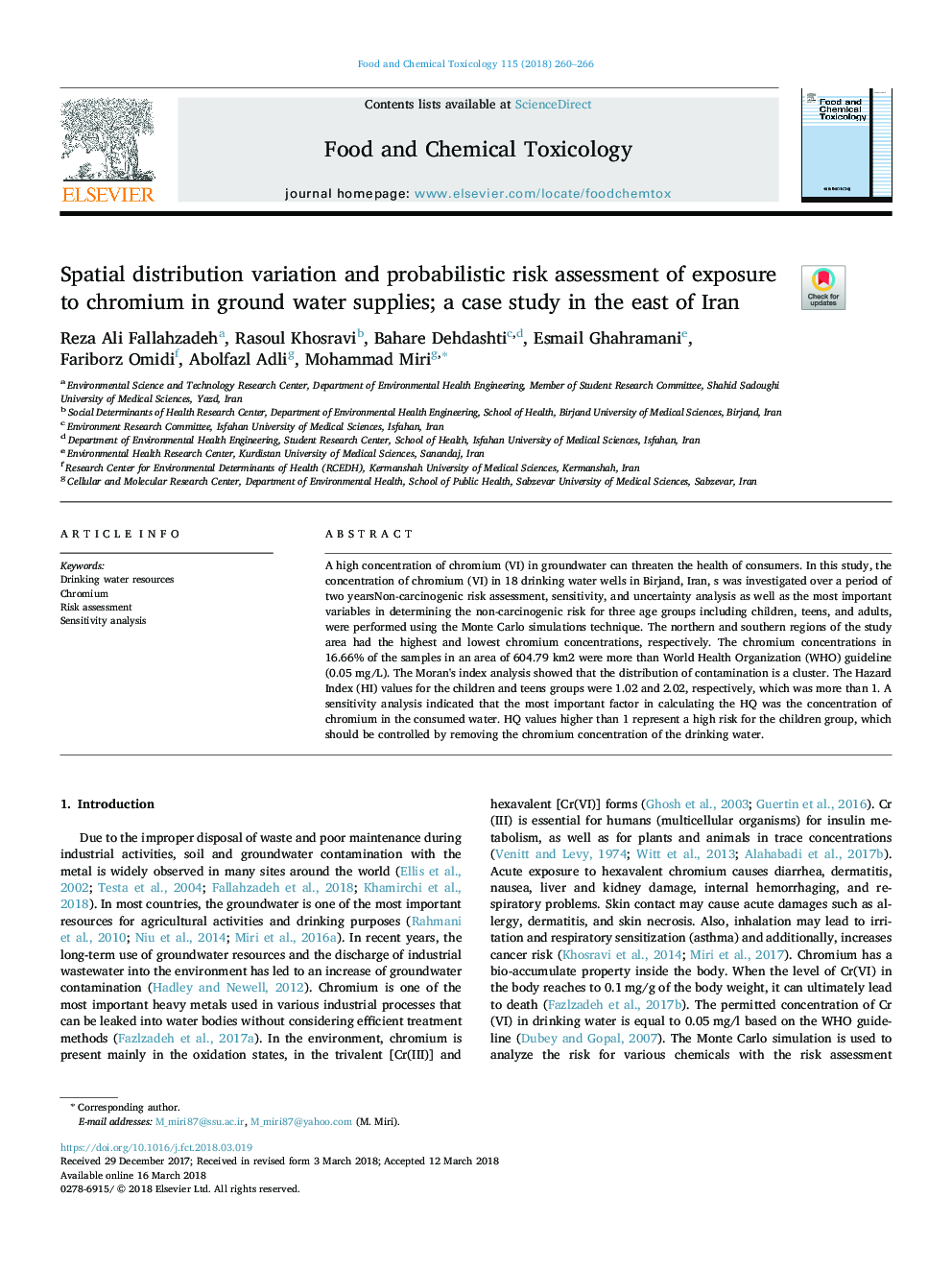| Article ID | Journal | Published Year | Pages | File Type |
|---|---|---|---|---|
| 8547610 | Food and Chemical Toxicology | 2018 | 7 Pages |
Abstract
A high concentration of chromium (VI) in groundwater can threaten the health of consumers. In this study, the concentration of chromium (VI) in 18 drinking water wells in Birjand, Iran, s was investigated over a period of two yearsNon-carcinogenic risk assessment, sensitivity, and uncertainty analysis as well as the most important variables in determining the non-carcinogenic risk for three age groups including children, teens, and adults, were performed using the Monte Carlo simulations technique. The northern and southern regions of the study area had the highest and lowest chromium concentrations, respectively. The chromium concentrations in 16.66% of the samples in an area of 604.79 km2 were more than World Health Organization (WHO) guideline (0.05 mg/L). The Moran's index analysis showed that the distribution of contamination is a cluster. The Hazard Index (HI) values for the children and teens groups were 1.02 and 2.02, respectively, which was more than 1. A sensitivity analysis indicated that the most important factor in calculating the HQ was the concentration of chromium in the consumed water. HQ values higher than 1 represent a high risk for the children group, which should be controlled by removing the chromium concentration of the drinking water.
Related Topics
Life Sciences
Agricultural and Biological Sciences
Food Science
Authors
Reza Ali Fallahzadeh, Rasoul Khosravi, Bahare Dehdashti, Esmail Ghahramani, Fariborz Omidi, Abolfazl Adli, Mohammad Miri,
